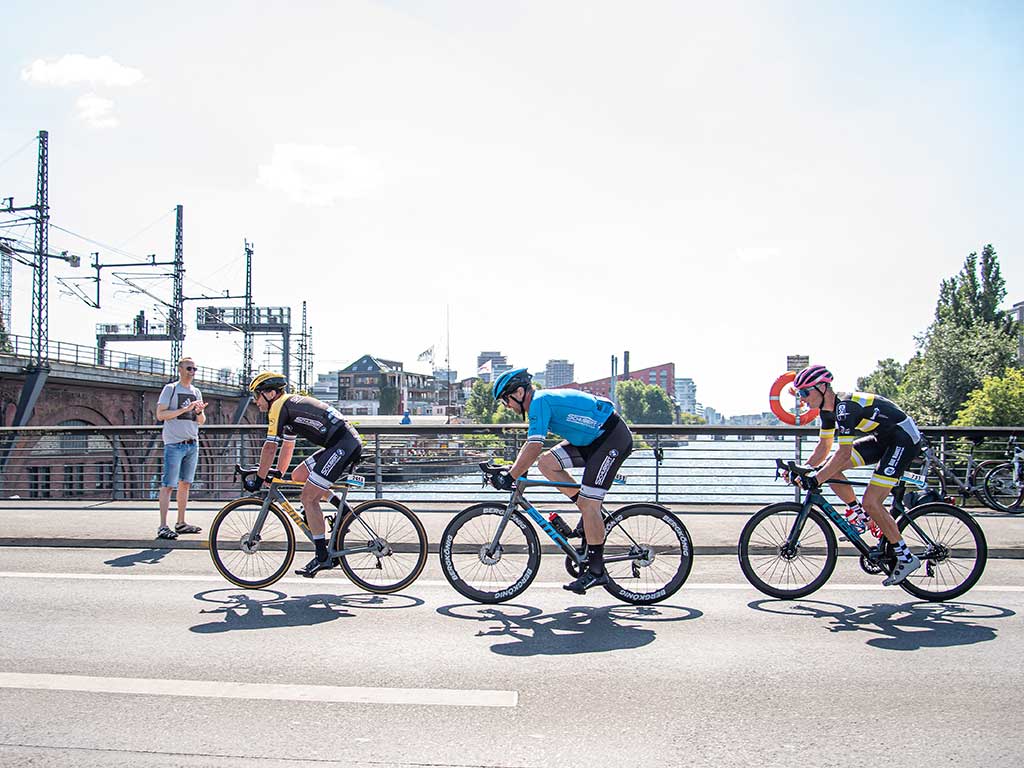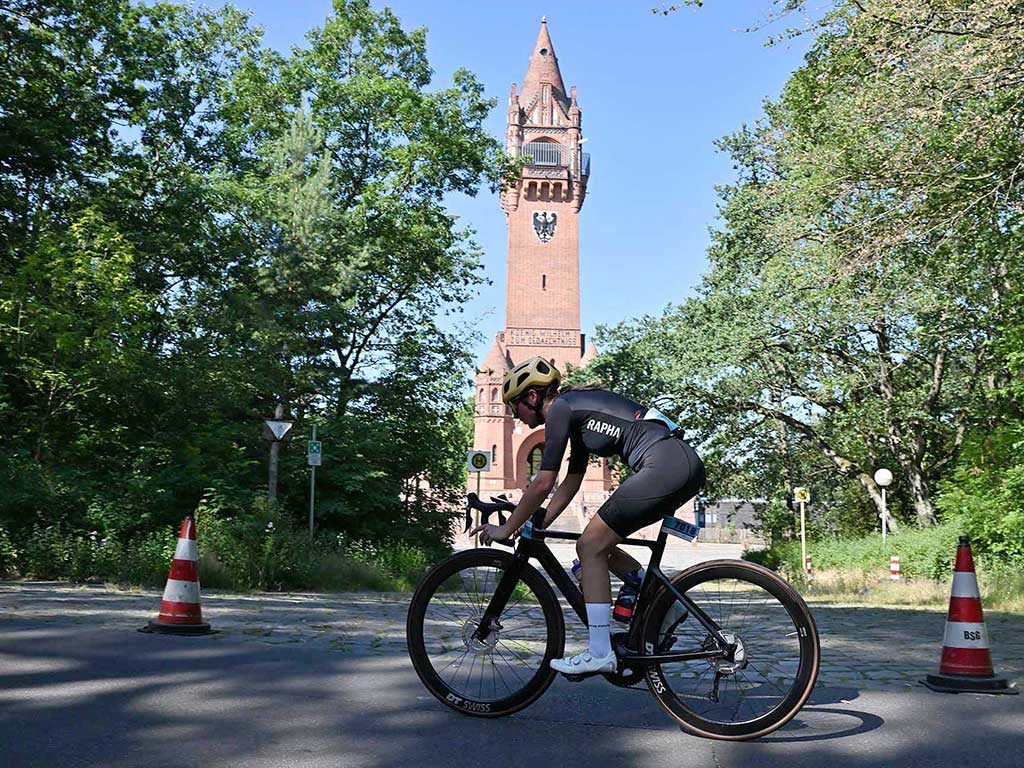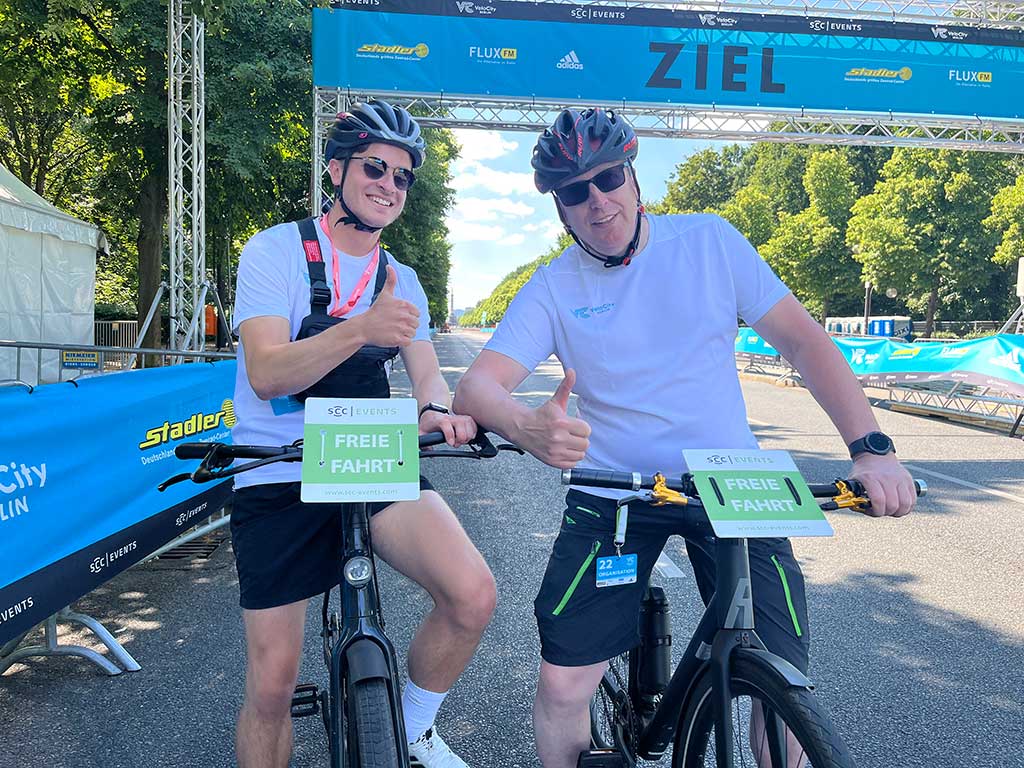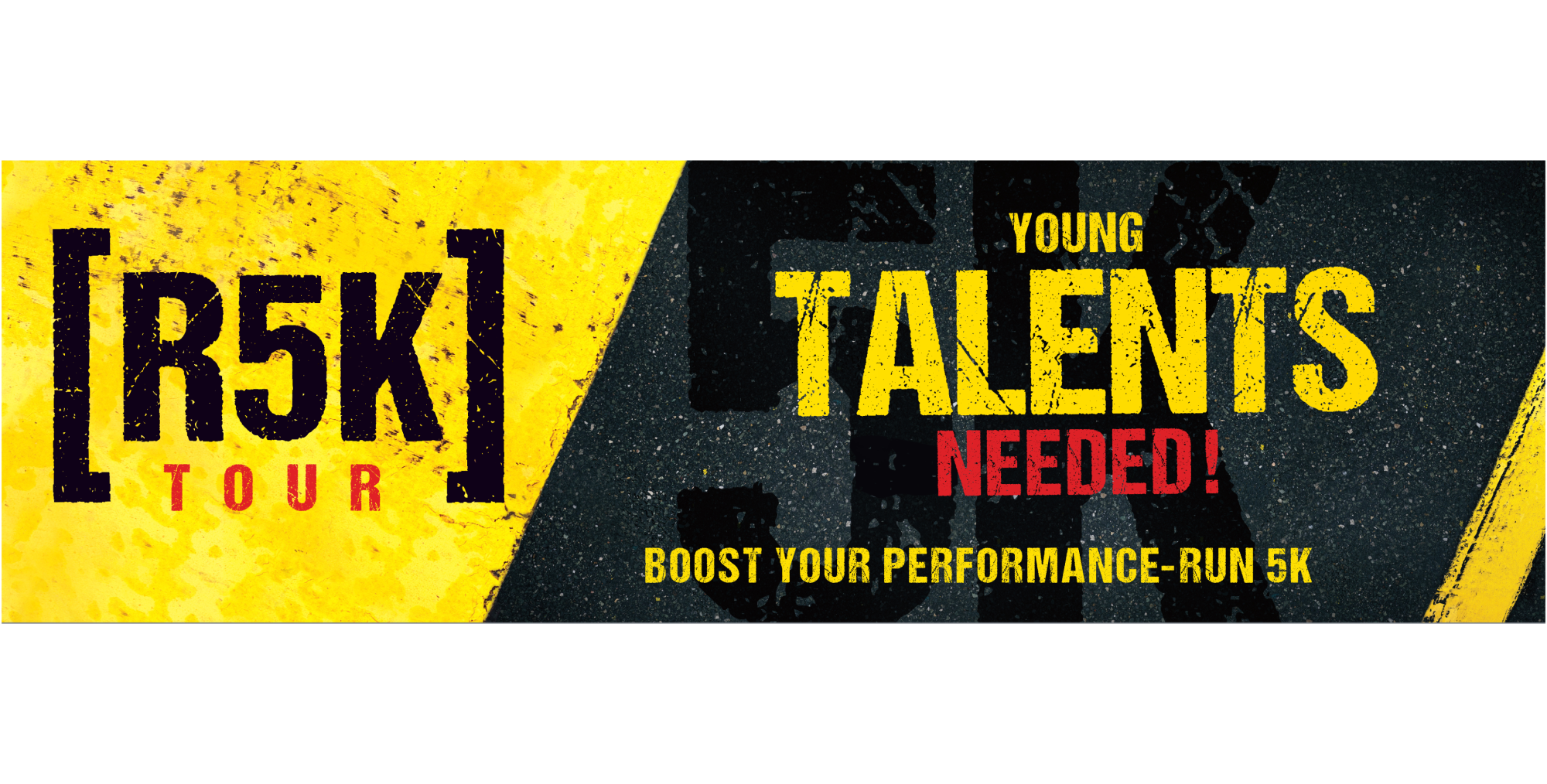Your first bike race at GENERALI VeloCity Berlin
The best beginner's tips for equipment and training
Riding with like-minded people, speed, fun: to ensure that your first cycle race at the GENERALI VeloCity Berlin is a success and remains memorable, there are a few things you should bear in mind. We have summarised the most important aspects for you.
The regulations for the Berlin race
When it comes to equipment for a cycling race, your bicycle is of course important. According to the regulations of the GENERALI VeloCity Berlin, bikes ranging from Dutch bikes to road bikes are allowed, but not e-bikes, time trial bikes or tandems. We describe the cycling equipment here using the example of the road bike. Please note: If bolts have to be loosened and tightened again for the purpose of adjustment, you should always adhere to the specified torques. This is even more important if there are carbon parts on the bike. To be on the safe side, use a torque spanner.

The perfect bike for your premiere competition
First of all, it is important that your bike fits your body size. Bike shops, whether they are brick-and-mortar or online, can give you advice and provide the right tools. If you are between two sizes, pick the smaller frame, when in doubt. This tip is also important if you are renting a bike for your first cycling race. According to the rules, your bike must have two independently functioning brakes, e.g. a front brake and a rear brake on road bikes.
Make sure that your brakes are well adjusted: On the one hand, they must develop sufficient braking power, on the other hand, they must not drag. In this context, also check the quick-releases: Does the wheel run straight? Are the quick-releases tight?
The correct body position on the bike
Check that the handlebars are correctly mounted. It must be impossible to twist the handlebars to the left or right: stand in front of your bike, clamp the front wheel between your legs and try to twist the handlebars to the side—if you are able to twist it, you need to check the attachment between the steerer tube and the stem. Then, while still standing in front of the bike, press hard on the brake levers with almost all your body weight. If you are able to turn the handlebars downwards, you need to check the clamping between the stem and handlebars. The height of the saddle should be adjusted correctly: Sitting on the saddle with the shoe clicked into the pedals, point one leg vertically downwards and extend the knee completely.
The pelvis must be horizontal when viewed from behind. In this position, the sole of the shoe must point slightly forward, i.e. the tip of the sole should be about one centimetre higher than the heel of the sole. This is the best method to use if you have an assistant to hold the seat post. The seat post must be properly clamped into the frame so that it does not slip down into the frame while riding.

Safe and fun at the GENERALI VeloCity Berlin
The gears must work properly both up and down, the chain must not fall off the sprockets (rear sprockets) or chainrings (front sprockets) either inwards or outwards. The tyres must have sufficient air. Recently, tyres have become wider, which improves riding comfort and puncture resistance. The correct air pressure depends on your weight and the width of the tyre; you can get precise information about this from your cycle dealer or online. Our tip: In wet conditions, reduce the pressure by about 1 bar to minimise the risk of slipping on bends. Also check the condition of the tyre surface, to ensure that the tyre is not too worn.
It is also helpful to have two bottle cages for your water bottles and, depending on the tyre system, suitable spare materials and tools and a pump or air cartridge. Important: At the GENERALI VeloCity Berlin you have to repair any punctures yourself, so you should practise this beforehand.
Your perfect equipment for the big race
For safety reasons, the most important piece of equipment is your helmet, which is compulsory at the GENERAL VeloCity Berlin. In order to function properly in an emergency, it must fit properly, must not be damaged and must not be too old, as the material ages over the years and can no longer absorb the impact energy optimally in an emergency. You can choose the ventilation, shape and colour according to your individual preferences. There is a wide choice of pedal systems and cycling shoes; specialist retailers can advise you on the advantages and disadvantages of the individual systems. For longer distances, cycling shorts with padding are recommended.
Depending on the weather, choose short or long cycling jerseys; sleeves are also a good option. In cool weather, it is important to wear either a windbreaker under your jersey or a tight-fitting windbreaker. Rain jackets should also fit to flap as little as possible in the wind. Gloves are an advantage for small falls because they protect your palms from abrasions.

The right training for beginner cyclists
Your training for an endurance race should follow this rule of thumb: The length of the competition distance must be trained weekly in the last 2-3 months before the race. If you have registered for the 60 km race, you should therefore ride a total of at least 60 km every week. The structure of the training is relatively simple, especially for beginners. One ride per week should be a longer tour at least two thirds of the distance of the competition—for the 60K race, for example, that means about 40 km or more.
Weekends are great for these longer tours. The intensity of the effort should be rather low but should also not be too low in order to get a training stimulus. Since the risk of injury to the musculoskeletal system through overloading is very low when cycling, the following applies: in case of doubt, go a little bit faster.
Prepare for Berlin's roads with speed and enjoyment
The second ride of the week should involve some speed training. Since this tour is a bit shorter, it is ideal for the work week. After a 15-30 minute easy ride, follow with intervals. You should do longer intervals of 5-10 minutes with medium intensity as well as shorter intervals of 2-5 minutes with high intensity. You can also mix these interval types in one ride. The pure interval minutes without breaks should be between 15 and 30 minutes, depending on your training level. For example, 4 intervals of 5 minutes each result in a total of 20 interval minutes.
During the rests you should just roll out, and the rest duration should take half the time of the intervals with medium intensity and about the full time of the intervals with high intensity. Why are these intervals at different intensities important? On the one hand, they are very effective in improving fitness, and on the other hand, you will face these intensities at the GENERALI VeloCity Berlin. If you have more time during the week, you can do more tours at lower intensities. In a week with time constraints, you can also integrate the intervals into the longer tour. By the way: the training suggested here is suitable for any gender.


















